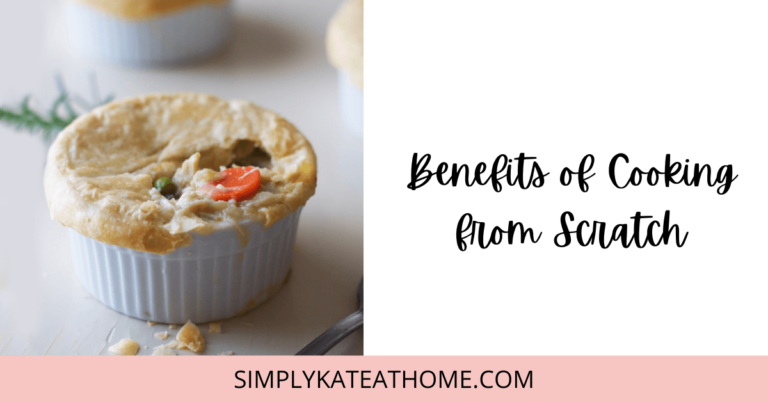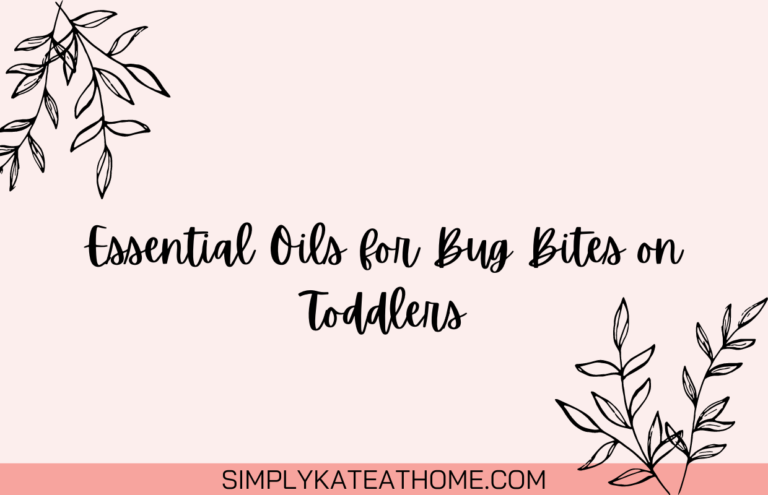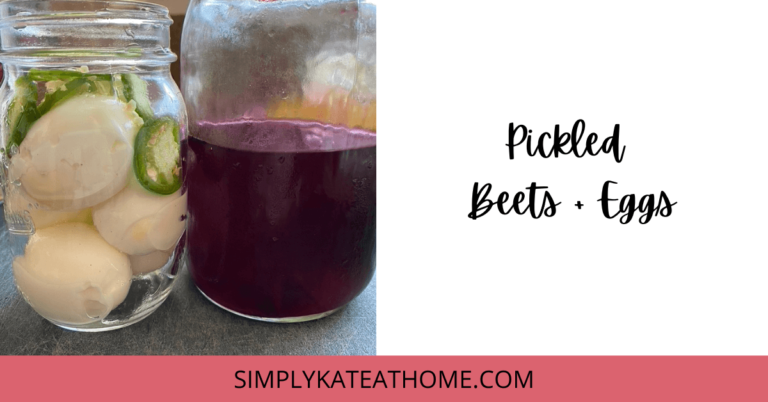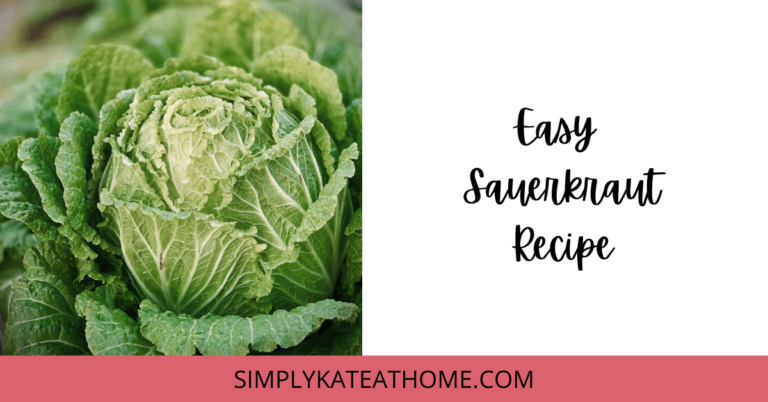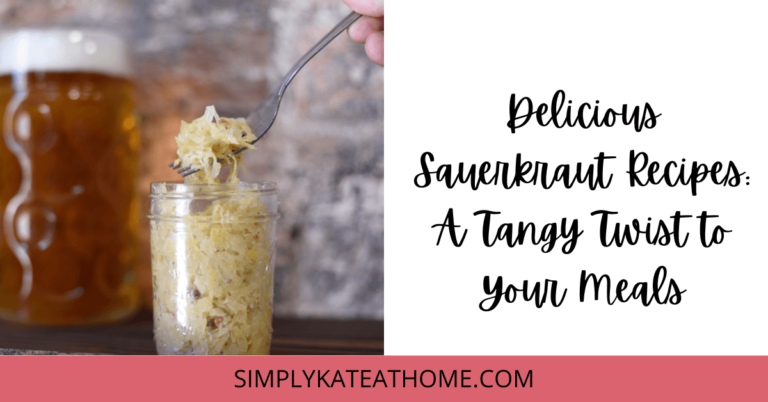Making Homemade Butter: Easy DIY
Making Homemade Butter: Easy DIY
If you’ve never tried making homemade butter, you’re in for a serious treat today! Homemade butter is so simple to make, needs only a few ingredients (two!) and only 10 minutes of your time. Before you know it, you’ll be slathering it on everything you can. Take your homemaking skills up a notch and try it with this easy homemade sourdough bread. It’s sure to impress.
In this post, you’ll read a couple of simple ways of making homemade butter. And if you’re feeling brave, read on for how to create cultured butter for extra depth and flavor!
Note: Simply Kate At Home is reader-supported. When you buy through links on our site, we may earn an affiliate commission. You do not pay a higher price. This blog post probably contains affiliate links. As an Amazon Associate, I earn from qualifying purchases.
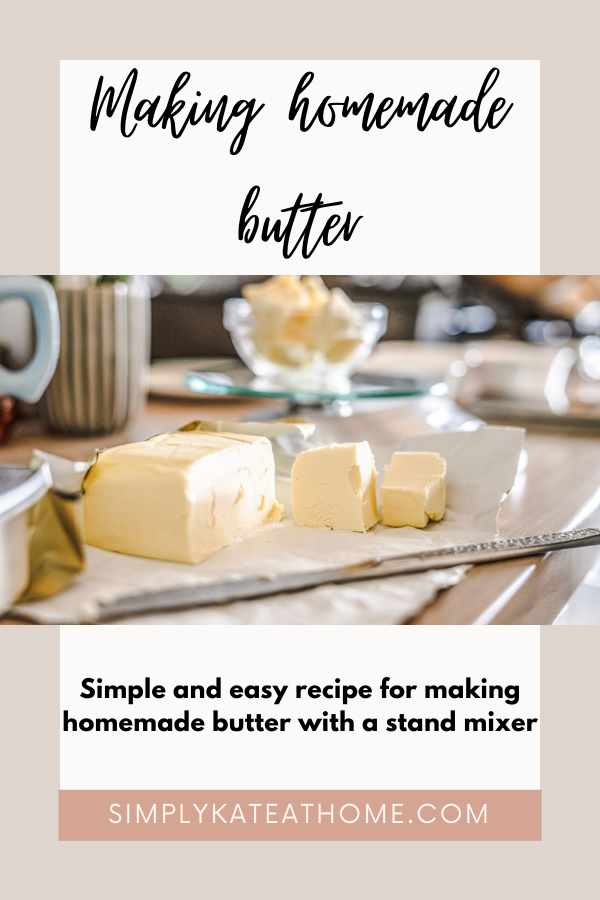
Is Making Homemade Butter Worth The Work?
Absolutely!
Making homemade butter is simple and so rewarding. There are plenty of reasons to take on this DIY today. First, it’s a great way to use up any extra cream you may have (I’m not sure I’ll ever be one of those people that has extra cream, but hey, they exist!).
Second, making butter results in buttermilk! This buttermilk is very different than the thick stuff you’d buy at the store, but it’s the OG. It can be used for baking just like you would with store-bought buttermilk but is so much more delicious. If you need an excuse to make sourdough buttermilk biscuits, here it is!
Is Making Your Own Butter Cheaper?
In short, probably not. In SoCal, the good organic heavy whipping cream is almost as, if not more, expensive than a pack of butter. You want to use milk products that are the least processed. The ultra-pasteurization kills the flavor of your homemade butter.
I use organic heavy whipping cream, although many people swear by raw cream for the best flavor. I can’t get raw cream locally very easily, but I’ll be sure to update here if I ever get the chance.
Cultured Butter
By now you’ve probably guessed that you’ll need heavy cream to make your butter. That was easy, wasn’t it?
Beyond that, if you’re feeling adventurous and have an extra 12-24 hours at your disposal, you can culture your cream for the most magical butter you’ll ever make. This step is totally not necessary but it’s worth the wait.
You’ll need butter cultures, which can be purchased from cheese-making suppliers. But if you’re like me, you’re reading this post because you want a simple, straightforward recipe. I’ve got you covered! Yogurt is the answer, my friends. Simple, plain, unflavored, additive-free, stabilizer-free… you get the idea. You want to find a yogurt that only contains milk and yogurt cultures.
Culturing your butter requires the cream and yogurt mix to sit on the counter at 70°F to 75°F for 12-24 hours. You’ll know it’s ready when it’s thick and bubbly, with a tangy smell. I typically put the mix into the bowl of my stand mixer with a kitchen towel over the top of it and let it rest overnight.
Once you’ve cultured your cream, chill it in the fridge for about an hour. The cream needs to be quite chilled in order to churn properly. If you have to leave it for longer than an hour, let it rest on the counter at room temperature for about an hour to take some of the chill off.
That’s it! Culturing butter is super easy to do, and while it may take a little extra time before you get to the churning stage, it’s absolutely worth it.
To Salt or Not to Salt
It’s a very serious question. No matter what type of butter you’ve made (cultured or not), adding salt is a personal preference. A little salt is great (about ¼ tsp for 2 cups of butter) for spreading on fresh homemade sourdough bread and some baking recipes. If you plan on using this butter for baking only, I’d suggest omitting it here. That way, your recipe that calls for unsalted butter won’t be too salty.
If you do decide to salt your homemade butter, be sure to do it at the end after you’ve washed the butter. Otherwise you’’ end up washing away the salty goodness.
Washing Butter
Yes, you read that right. Wash your butter.
No soap is needed here though! After you’ve drained and pressed your butter, there is still a lot of buttermilk remaining trapped in the delicious yellow mounds. You want to squish and press as much of this buttermilk out as possible in order to prevent spoilage.
You might be wondering, “how long does homemade butter last, anyways?” Well, if you’re like my household, it’ll last a day or two if we’re lucky… Hungry toddlers and a hardworking man suck this stuff up like chocolate milk.
But, typically, homemade butter lasts for about 3 weeks if stored in an airtight container in the fridge. You can also freeze it in blocks wrapped in parchment paper and clingwrap for several months. I freeze anything extra that I have, and that way I always have a little stash of homemade butter.
Making Homemade Butter
Alright, now that you’ve got more butter knowledge than you asked for, let’s get to how you make it!
Mason Jar Method
The jar method is the workout version of butter making. Maybe do some stretches beforehand, or find a willing child who needs to burn some energy. This method can take upwards of 20 minutes.
What you’ll need:
- Mason jar with lid
- 1 Pint (2 cups) organic heavy whipping cream (not ultra-pasteurized)
- ¼ tsp salt (optional)
- 2 tbsp yogurt (optional)
- Ice water for washing the butter
Add the heavy whipping cream to the mason jar and screw the lid on tight. Shake, shake, shake until the cows come home! You’ll eventually hear and see the butter clumps clunking around in the jar.
Drain the liquid into another jar, and take out the butter. Place the butter mass into a bowl of ice water and squish it around. Empty and refill the ice water until it runs clear.
Store butter in an airtight container in the fridge for up to three weeks.
Stand Mixer Method
Ingredients:
- 1 Pint (2 cups) organic heavy whipping cream (not ultra-pasteurized)
- ¼ tsp salt (optional)
- 2 tbsp yogurt (optional)
- Ice water for washing the butter
EQUIPMENT
- Kitchenaid mixer (I have this one in red!)
- Wooden spoon
- Clean kitchen towel
Blend heavy whipping cream on medium-high in the bowl of a stand mixer. I use my KitchenAid and it makes this so easy. Put a clean dishtowel over the top, things can get a little messy.
First, you’ll get whipped cream. Keep mixing!
After about 5 minutes, the fat and liquid will separate, forming butter and buttermilk. It mostly gets stuck to the mixer attachment. Stop the mixer for a moment to push the sides down in the bowl and push the butter out of the mixer attachment. Mix again on high until it’s all done.
Pour off as much of the buttermilk as you can into a separate jar. Save that buttermilk for my sourdough buttermilk biscuit recipe!
Scoop the butter into very cold water. Knead and squeeze it to release any remaining buttermilk. Wash in several changes of water until it remains clear.
Pat the butter dry and stir in salt to taste. Stir it well! You don’t want to find a big mouthful of salt. Start with a scant 1/8 teaspoon and increase as needed.
Store in the refrigerator in an air-tight container or well-wrapped in the freezer for longer.
That’s it friends! Making homemade butter is a pretty simple task, and to be honest, it probably took longer to read this tutorial than actually making it. But thanks for sticking with me!


